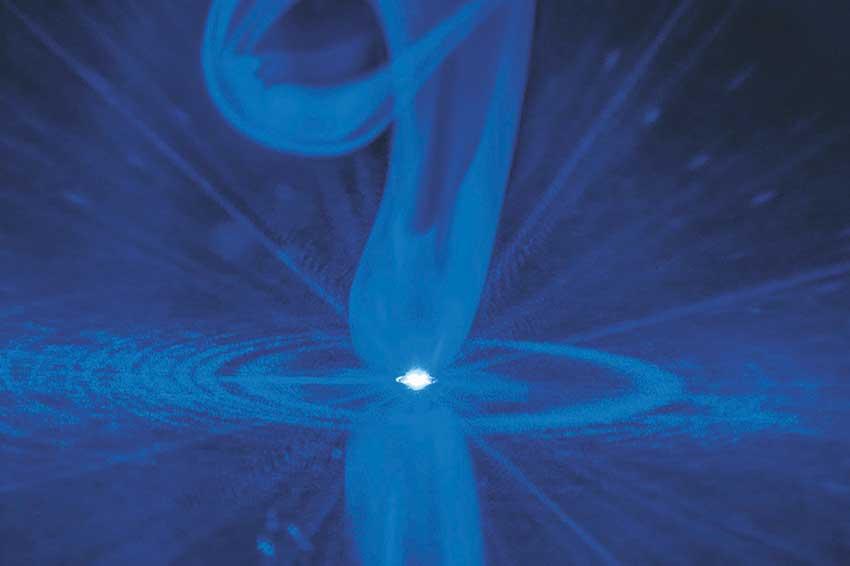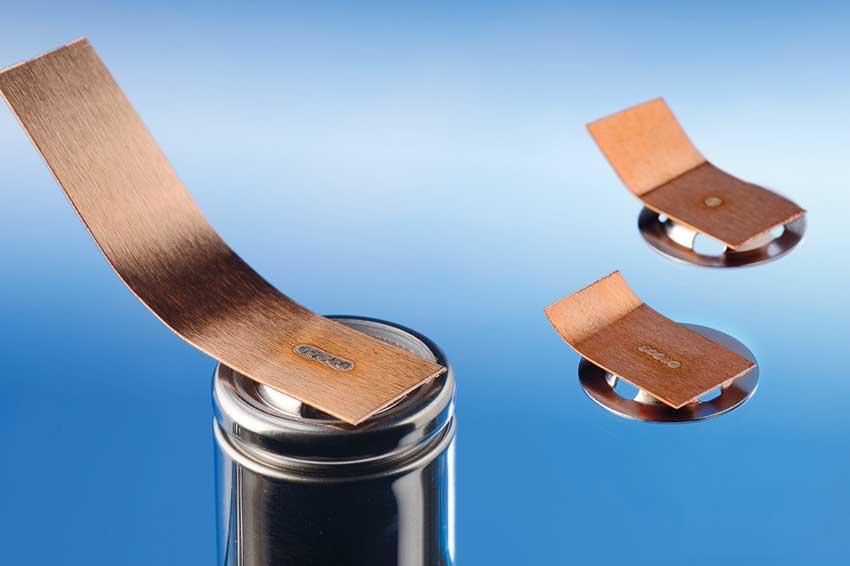Two lasers, two applications, one goal
18.05.2021 - The projects “HoLiB” and “MikroPuls” investigate how laser technology can be used to economically contact and join dissimilar materials.
The trend away from the combustion engine to the electric drive can no longer be stopped. However, it will only be successful if battery cells can be manufactured efficiently and reliably, and if they can be interconnected to form modules and packs in order to dependably cover the upcoming large demand for storage capacity.
For example, processes are required with which lithium-ion batteries can be manufactured much more productively than before. The BMBF project “HoLiB - High throughput processes for the production of lithium ion batteries” of the Competence Cluster for Battery Cell Production (ProZell) focuses on employing new technologies for assembly, stack formation and contacting as well as cutting out activities that do not add value, all within the entire process chain. The TU Braunschweig is developing a laser punching process for cutting the electrodes from a continuously guided material web in milliseconds. A rotating stacking wheel places anode and cathode-separator assemblies individually and stacks them alternately in a magazine.
This is where Fraunhofer ILT comes in: It is developing and qualifying a laser process that can be used to connect anodes and cathodes to the contacts: the arrester tabs. Because the anodes are made of copper, the cathodes of aluminum and the arrester tabs of both materials, the Aachen researchers decided to test three different beam sources. A blue diode laser (wavelength: 450 nm), a green disk laser (515 nm) and an infrared fiber laser (1,070 nm) are being used. “We are investigating which beam source is best suited for which joining task”, explains Johanna Helm, a research associate at the Fraunhofer ILT. “The test of the three beam sources has already shown that the film stack can be welded through with process reliability. We are currently verifying the process windows and carrying out welding tests on the arrester tabs.”
The scientist also suggested using a turntable with several stations on which the electrodes can be stacked for contacting. The twenty anodes and cathodes are stacked by a stacking wheel at 0.1-second intervals so that a stack is ready within two seconds. When a stack is at a station on the turntable, the turntable continues to rotate rapidly so that the rotating stacking wheel can deposit further anodes and cathodes on the next free space. In parallel, the laser-based contacting process for the first deposited stack can start without any loss of time.
Nanosecond laser pulses protect heat-sensitive components
In the AiF project MikroPuls, scientists are examining how to bond battery cells more efficiently. With the support of industrial partners, Fraunhofer ILT is developing processes for joining copper, aluminum and steel with an infrared fiber laser pulsed in the nanosecond range.
These are demanding processes because the thin electrical contacts are thermally sensitive and may not be heated too much. A balance is important here: If too little welding energy is applied, the connection lacks mechanical stability; if too much energy is applied, the batteries’ mode of operation is impaired or their service life is shortened. “Some sensitive electrolytes are already destroyed at 60 °C”, explains Elie Haddad, research associate at Fraunhofer ILT. “This is where the fast MikroPuls process can play out its advantages, which can even be used to generate copper welds at a maximum average power of 200 watts while introducing little energy into the components.”
Reliable laser welding of dissimilar materials
The dissimilar joints between copper and aluminum, for example, also pose a particular challenge. Haddad explains: “Here, intermetallic phases form quickly, which deteriorate the quality of the weld seam. They can lead, for example, to high contact resistances that result in either high losses due to heat or brittle joints that can no longer withstand mechanical forces.” The experts use tensile shear experiments and SEM images to analyze the results of the welding tests, also to reduce the intermetallic phases. An important role is played by selectively identifying the optimum parameters with which users can also reliably generate dissimilar joints that have a consistent welding depth and high weld quality.
Tests with copper-aluminum joints on pouch cells and copper-steel joints on cylindrical cells, among others, showed that micro-pulse joining can achieve just as good joints as continuous cw welding – with significantly lower energy consumption, higher repeatability and fewer intermetallic phases. The only disadvantage is that the welding process generally takes longer. So there are still parameters that need to be improved.
The engineers in Aachen already have a system in operation that integrates both a cw fiber laser and a nanosecond pulsed fiber laser. The beam sources can be controlled individually. The system can not only join, but also remove material, for example to structure surfaces. (Source: Fh. ILT)








